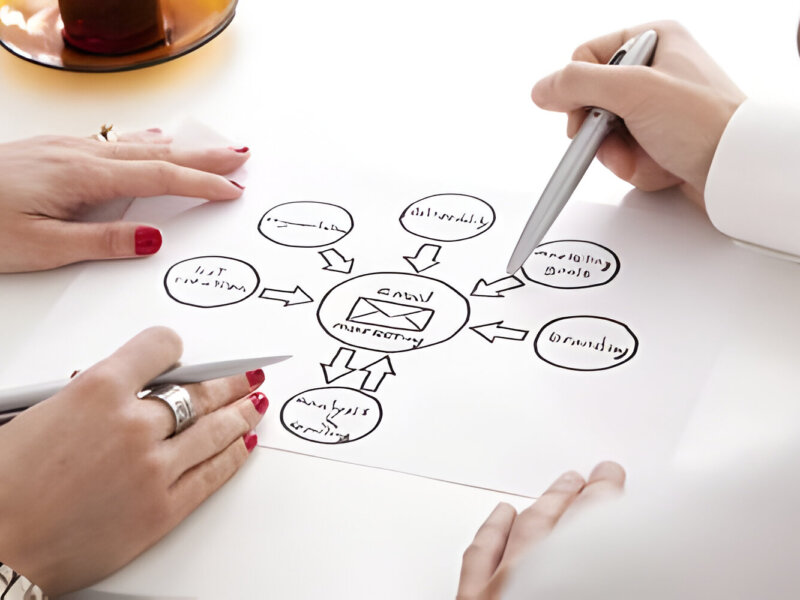When it comes to branding, your logo is the visual ambassador of your brand, making it crucial to choose the right type. In this guide, we’ll explore six distinct logotypes, each with its unique characteristics and suitability for different brands.
From timeless wordmarks to iconic symbols, the diversity of logo designs offers businesses various avenues to express their identity. By understanding the nuances of each logo type, you can make an informed decision that resonates with your brand’s values and audience.
So, let’s dive into the world of logo design and unravel the intricacies of each logotype. Whether you’re a startup crafting your brand identity or an established business seeking a logo refresh, this exploration will help you navigate the landscape of logo design with confidence.
Embark on this journey with us as we decode the art and science behind logo design, empowering you to make a choice that not only represents your brand but also captivates your audience and leaves a lasting impression. Let’s find the perfect logo that speaks volumes about your brand’s story and aspirations.
What is a logo?
A logo is more than just a visual mark; it’s the face of your brand, the first impression that shapes perceptions. It embodies your brand’s essence, values, and personality, serving as a beacon that guides consumers toward your offerings in a crowded marketplace.
Think of your logo as the cornerstone of your brand identity, a powerful tool that communicates your brand’s story and resonates with your target audience. It’s the symbol that sparks recognition and fosters trust, forging a connection that transcends language and culture.
In essence, a logo is the encapsulation of your brand’s promise, distilled into a single, memorable image or wordmark. It’s the embodiment of your brand’s ethos, encapsulating the essence of what you stand for and what sets you apart from competitors.
Exploring Six Types of Logos
- Wordmarks
- Letter marks
- Pictorial Marks
- Abstract Marks
- Mascots
- Combination Marks
In the diverse realm of logo design, each type offers a distinct approach to visually representing a brand’s identity, allowing businesses to choose the style that best aligns with their vision and objectives.
Wordmarks
In the realm of logo design, wordmarks stand tall as a testament to the power of typography. They leverage the artistic expression of letters to create a visual identity that is both distinctive and memorable.
Crafted with careful consideration of font choice, spacing, and styling, wordmarks encapsulate the essence of a brand’s name in a visually appealing manner. Their simplicity fosters instant recognition and fosters a strong association between the brand and its identity.
When to use: Wordmarks are ideal for brands with short, memorable names or those seeking to establish strong brand recognition solely through their name. They excel in industries where name recognition is paramount, such as tech startups, fashion labels, and media companies.
Letter Marks
In the world of logo design, lettermarks offer a concise yet powerful way to represent a brand’s identity. By condensing the brand’s name into a distinct set of initials or abbreviations, letter marks create a visual shorthand that is instantly recognizable.
These logos often feature customized typography, with letters creatively intertwined or stylized to convey the brand’s personality. Letter marks are particularly effective for brands with long or complex names, allowing them to streamline their visual identity while maintaining brand recognition.
When to use: Lettermarks are ideal for brands with lengthy or difficult-to-pronounce names, as they offer a concise and memorable representation of the brand. They are also well-suited for businesses operating in industries where brand recognition is key, such as law firms, consulting agencies, and financial institutions.
Pictorial Marks
Pictorial marks are the visual storytellers of the branding world, using images or symbols to convey a brand’s identity without relying on text. These logos distill complex ideas and emotions into simple yet powerful visuals, making them instantly recognizable and memorable.
With the right combination of shape, color, and symbolism, pictorial marks become synonymous with the brand they represent, transcending language and cultural barriers. They offer versatility and scalability, making them suitable for a wide range of applications, from digital platforms to merchandise and packaging.
When to use: Pictorial marks are perfect for brands that want to communicate their identity through a universal and timeless symbol. They are particularly effective for businesses targeting international markets or those operating in visually-oriented industries such as entertainment, technology, and hospitality.
Abstract Marks
Abstract marks are the avant-garde of logo design, eschewing literal representation in favor of unique and non-representational designs. These logos rely on shapes, patterns, and colors to evoke emotions and convey the essence of a brand’s identity in a visually striking manner.
By steering clear of recognizable symbols or imagery, abstract marks invite interpretation and foster a sense of intrigue and curiosity. They provide a blank canvas for creativity, allowing brands to establish a distinctive visual identity that stands out in a crowded marketplace.
When to use: Abstract marks are ideal for brands that want to convey a sense of innovation, creativity, or sophistication. They are particularly well-suited for companies in cutting-edge industries such as technology, design, and fashion, where differentiation and originality are paramount.
Mascots
Mascots inject personality and charm into a brand’s identity, bringing it to life through endearing characters and personas. These animated ambassadors personify the brand’s values and resonate with audiences on an emotional level, fostering strong connections and brand loyalty.
From playful animals to iconic figures, mascots capture attention and leave a lasting impression, making them effective brand ambassadors across various marketing channels. Their versatility allows them to adapt to different contexts and engage audiences across demographics.
When to use: Mascots are ideal for brands looking to establish a friendly and approachable image or appeal to a younger audience. They are particularly effective for companies in industries such as food and beverage, sports, and entertainment, where personality-driven branding can set them apart from competitors.
Combination Marks
Combination marks seamlessly blend text and symbols to create a cohesive and impactful brand identity. By incorporating both elements, these logos offer the best of both worlds, combining the clarity of wordmarks with the visual appeal of symbols.
This versatility allows combination marks to convey a brand’s name and essence simultaneously, making them highly effective in establishing brand recognition and communicating key messages. Their adaptability makes them suitable for a wide range of applications, from digital platforms to print materials and signage.
When to use: Combination marks are perfect for brands seeking a versatile and comprehensive visual identity that can evolve with their business. They are particularly well-suited for startups and small businesses looking to establish a strong brand presence or rebranding efforts aimed at modernizing and revitalizing existing identities.
Five Tips for Creating a Good Logo
- Understand Your Brand Identity
- Keep It Simple and Memorable
- Prioritize Versatility and Scalability
- Pay Attention to Color and Typography
- Seek Feedback and Iterate
Crafting a good logo requires a deep understanding of your brand’s identity, a commitment to simplicity and memorability, and attention to detail in design elements like color and typography. By following these tips and seeking feedback throughout the process, you can create a logo that effectively represents your brand and resonates with your audience.
Understand Your Brand Identity
Dive deep into your brand’s identity, understanding its core values, mission, and unique selling points. Research your target audience to comprehend their preferences, interests, and behaviors. This foundational understanding serves as a compass guiding your logo design journey, ensuring that your logo encapsulates the essence of your brand and resonates with your audience.
Keep It Simple and Memorable
In the realm of logo design, simplicity reigns supreme. Strive for a design that is clean, uncluttered, and instantly recognizable. Opt for timeless elements that transcend trends, ensuring that your logo remains memorable for years to come. Remember, some of the most iconic logos in history are also the simplest, standing the test of time through their elegant simplicity.
Prioritize Versatility and Scalability
Design your logo with versatility in mind, ensuring it can adapt to various applications and mediums. Consider how your logo will appear across digital platforms, print materials, merchandise, and signage. Maintain clarity and legibility at different sizes, ensuring your logo retains its impact whether scaled down on a business card or enlarged on a billboard.
Pay Attention to Color and Typography
Color and typography are powerful tools in logo design, influencing perception and evoking emotions. Choose colors that reflect your brand’s personality, values, and target audience preferences. Select fonts that complement your brand identity and enhance readability. The right combination of color and typography strengthens your logo’s visual impact and effectively communicates your brand’s message.
Seek Feedback and Iterate
Invite feedback from trusted sources, including colleagues, clients, and target customers, throughout the design process. Listen attentively to their insights and suggestions, leveraging their perspectives to refine your logo design. Iterate on your design based on feedback, experimenting with different elements and iterations until you achieve a logo that resonates deeply with your audience and accurately represents your brand.
Final Note
As you embark on your logo design journey, remember that your logo is more than just a visual mark—it’s the embodiment of your brand’s identity and values. By understanding your brand’s essence, embracing simplicity, and prioritizing versatility, you can create a logo that captivates your audience and leaves a lasting impression.
Additionally, don’t hesitate to seek feedback from trusted sources and iterate on your design until it aligns perfectly with your brand’s objectives. With careful attention to detail and a commitment to excellence, you can craft a logo that stands out in a crowded marketplace and resonates deeply with your target audience.
Ready to bring your brand to life with a stunning logo? Contact us today to learn more about our logo design services and how we can help you achieve your branding goals. Let’s collaborate to create a logo that elevates your brand and sets you apart from the competition.





